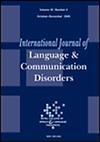Comparative Study of Speech Rate in People With Multiple Sclerosis and Healthy Individuals: Analysing Characteristics of Voiced and Voiceless Plosive Consonants
Abstract
Background
Multiple sclerosis (MS) is an autoimmune disease that attacks the central nervous system and has several subtypes. The disease pathophysiology includes damage to the myelin in the brain and spinal cord, manifesting in a wide range of neurological symptoms and impacting patients’ physical, psychological, social, and communication functioning. The purpose of this research is to compare speech rate characteristics in people with MS and healthy individuals by analysing the phonetic properties of voiced and voiceless plosive consonants.
Methods
This research employs a cross-sectional, causal-comparative design. The possible statistical population consisted of PwMS (people with MS) and healthy individuals living in Fars province in 2023. All PwMS were formally diagnosed by a neurologist. From the possible statistical population, a total of 80 participants were selected as the sample size using an available sampling method, with 16 individuals chosen from each group (four MS groups; one for each subtype, and one healthy group). In this study, speech rate was the independent variable and was compared between PwMS and healthy individuals.
Results
The findings show that when reading texts with voiceless plosive consonants, all disease groups showed a significant difference in speech rate compared to the healthy group (p < 0.001). Additionally, the different disease subtypes also exhibited significant differences in speech rate from each other (p < 0.001). However, when reading texts with voiced plosive consonants, all groups except for the RR group showed a significant difference from the healthy group in terms of speech rate (RR: p = 0.687; PR, PP, and SP: p < 0.001). Moreover, the disease subtypes had significant differences in speech rate scores from one another (p < 0.001).
Conclusions
According to the research findings, speech rate differs significantly MS subtypes. This result can help specialists in predicting the flow and subtype of MS. Therefore, speech rate can play an important role in increasing communication and speech ability as well as diagnosing the progression of MS.
WHAT THIS PAPER ADDS
- So far, researchers have conducted research on the language problems of MS patients. These researches include topics such as word search, cognitive performance in progressive relapsing multiple sclerosis patients, the effect of cognitive function on speech speed, etc. Some studies indicate a difference in verbal memory and speech rate in these patients compared to normal people, but the results of other studies have not shown a significant difference. Also, the slowness of speech of MS patients has been considered to be caused by cognitive problems, and they have not mentioned the problems of the slowness of speech production muscles.
- The current research is conducted with the aim of investigating the speech rate based on the characteristics of speech production in order to answer these questions: (a) “Is the speech rate different in people with different types of MS compared to healthy people?”; (b) “Could this difference be related to motor-muscular problems in speech production?”. To achieve this goal, researchers investigate the phonetic component of the voice onset time in plosive consonants.
- The results of this research show that there is a significant difference between unvoiced and voiced plosive consonants through the time interval between the release of the consonant closure. Therefore, the voiced and voiceless components during the production of plosive consonants can affect the speech rate, and patients with various types of MS have problems in producing these consonants due to having a range of disorders in the neuro-motor system. Therefore, the reason for the inconsistency of the previous research results in terms of the significance is the lack of attention to the phonetic features of words.

 求助内容:
求助内容: 应助结果提醒方式:
应助结果提醒方式:


